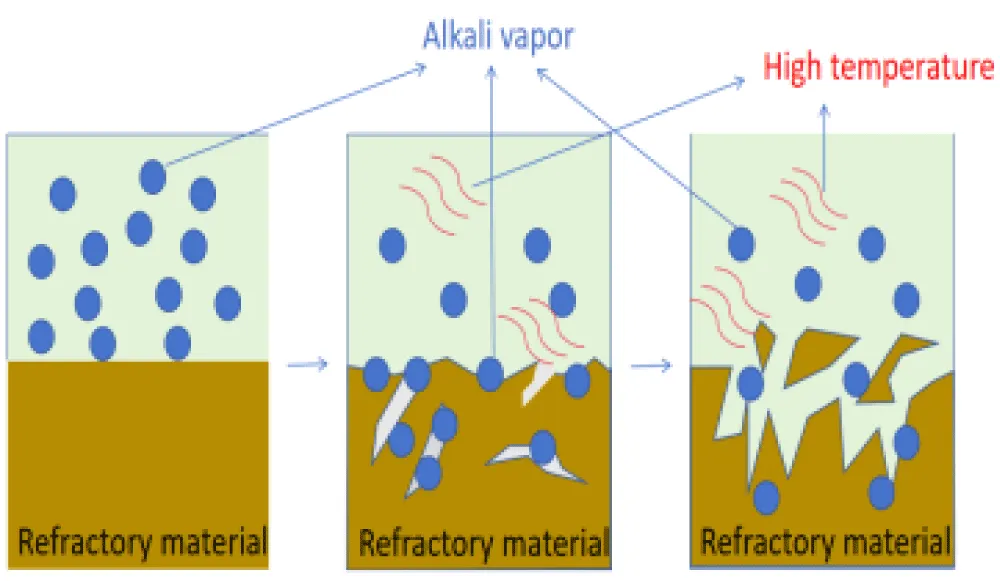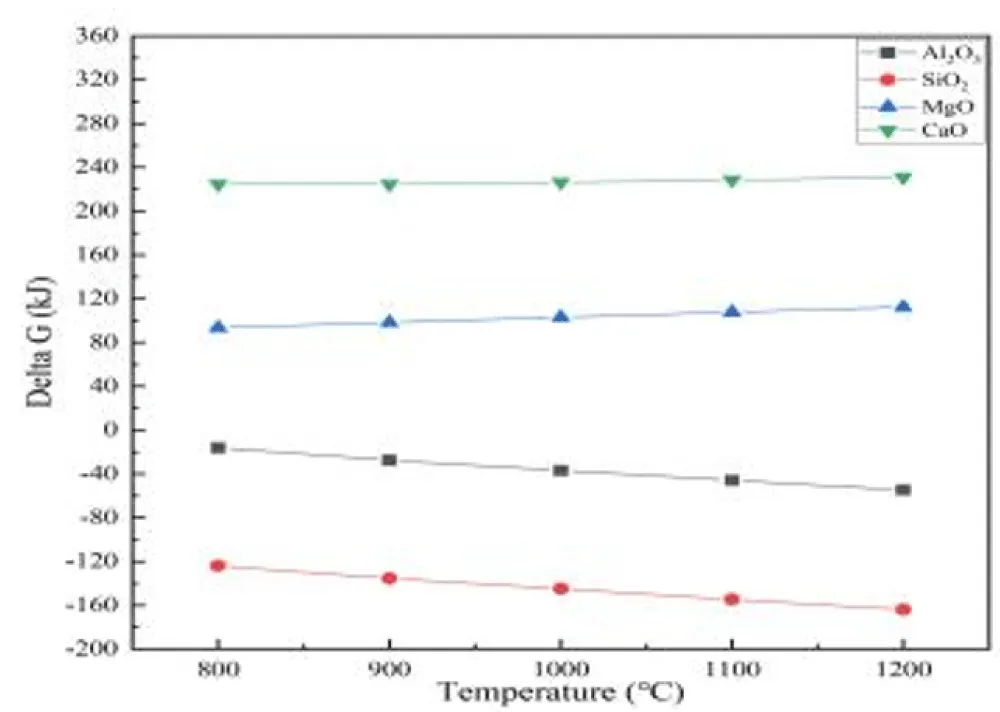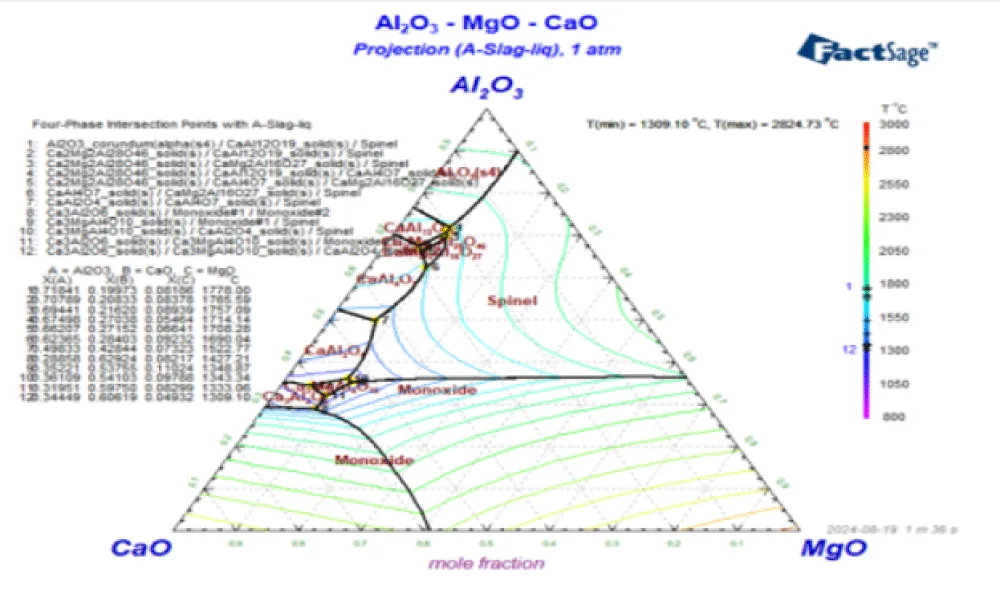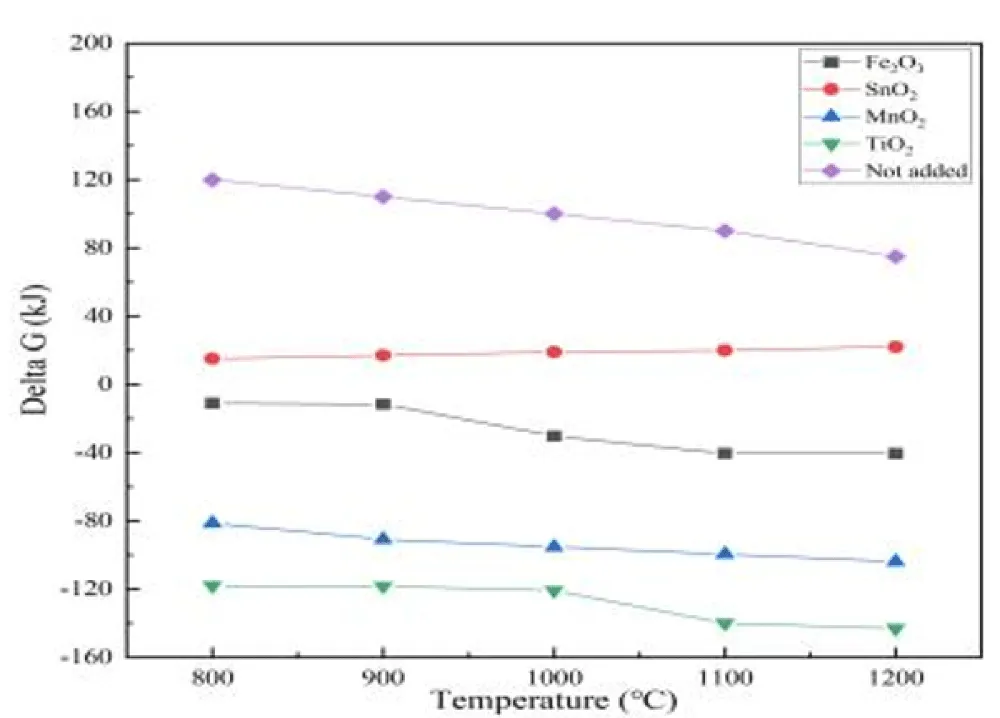Annals of Environmental Science and Toxicology
Thermodynamic Analysis of Ca-Mg-Al-based Refractory Resistance to Na2CO3 Corrosion
Zheng Quanjun1, Zhang Qiushi2, Dong Changqing2*, Hu Xiaoying2 and WU Huiyu2
1Beijing Aerospace Petrochemical EC and EP Technology Co. Ltd., Beijing 100176, China
2North China Electric Power University, Beijing 102206, China
Cite this as
Quanjun Z, Qiushi Z, Changqing D, Xiaoying H, Huiyu WU. Thermodynamic Analysis of Ca-Mg-Al-based Refractory Resistance to Na2CO3 Corrosion. Ann Environ Sci Toxicol. 2025;9(1):027-029. Available from: 10.17352/aest.000087Copyright
© 2025 Quanjun Z, et al. This is an open-access article distributed under the terms of the Creative Commons Attribution License, which permits unrestricted use, distribution, and reproduction in any medium, provided the original author and source are credited.Papermaking black liquor contains Na2CO3, which can corrode refractory materials and cause economic losses. It is considered to introduce CaO and MgO alkaline oxides into Al2O3 to prepare calcium magnesium aluminum composite oxides as a substitute for Al2O3 as corrosion shell materials. Using the FactSage material balance module, the optimal ratio of CaO-MgO-Al2O3 was calculated, and it was found that the Gibbs free energy of C2M2A14 reacting with Na2CO3 at 800-1200 ℃ was positive. C2M2A14 was selected as the optimal ratio of calcium-magnesium aluminum composite oxide to resist Na2CO3.
The alkali recovery method for treating papermaking black liquor can recycle Na₂CO₃, realizing the reuse of resources [1-4]. When burning in the furnace, sodium salts will adhere to the surface of the refractory materials, and undergo cladding and penetration, causing corrosion and spalling of the refractory materials [5-7]. Al₂O₃ has stable performance and has high hardness and strength. SiO₂ has strong resistance to molten slag erosion, and MgO has the characteristic of resistance to alkali molten slag erosion [8-10]. FactSage can be used for the simulation and calculation of corrosion reactions of refractory materials and molten salts [11,12]. This paper focuses on the research of the corrosion resistance of Ca-Mg-Al-based materials against Na₂CO₃.
The corrosion and penetration mechanism of Na₂CO₃
The vapor of Na₂CO₃ in the alkali recovery furnace at 1200 °C penetrates the pores of the refractory material, resulting in the loss and thinning. The vapor of Na₂CO₃ reacts with the refractory material to form new products, and the thermal expansion and contraction properties of these new products are different from those of the original refractory material. This leads to changes in the internal stress, causing cracks to appear [13,14], as shown in Figure 1.
Thermodynamic Simulation of the Reaction between Na₂CO₃ and Al₂O₃/SiO₂/ MgO/CaO
As shown in Figure 2, the Gibbs free energy of the reactions between Al₂O₃, SiO₂, and Na₂CO₃ is negative. In contrast, the Gibbs free energy of the reactions between MgO, CaO, and Na₂CO₃ is positive. Use the FactSage 7.3 software, select the databases of Fact PS, FToxid, and FTsalt, and perform the calculation assuming a pressure of one atmosphere, it is found that for the reaction between Al₂O₃ and Na₂CO₃, the reaction intensifies as the temperature rises. At 800 °C, approximately 99.9% of Al₂O₃ is converted into NaAlO₂. At 1200 °C, there is a tendency for approximately 98.6% of NaAlO₂ to transform into Na₂Al₁₂O₁₉. Under the same reaction conditions, approximately 99.9% of the SiO₂ is converted into Na₂SiO₃.
Simulation of calcium-magnesium-aluminum composite oxide
Simulation and screening of composite oxides: In Figure 3, the substances generated by different ratios of MgO/Al₂O₃/CaO at different temperatures are Ca₃MgAl₄O₁₀, CaMg₂Al₁₆O₂₇, and Ca₂Mg₂Al₂₈O₄₆, all of which are derived from the magnetoplumbite crystal structure of CaAl₁₂O₁₉ [14]. Ca₂Mg₂Al₂₈O₄₆ is a high-melting-point compound in the sub-solid phase of the Al₂O₃-rich part of the Al₂O₃-MgO-CaO ternary system. The solid solution effect of Mg²⁺ promotes the growth of the crystal along the c-axis direction, and the crystals exhibit hexagonal plate-like and hexagonal prismatic morphologies respectively. Its reaction products with Na₂CO₃ under air and water vapor conditions are mainly CO₂, Na₂Al₁₂O₁₉(s), Na₂Ca₃Al₁₆O₂₈(s), NaAlO₂(s) and NaOH(g).
The influence of oxide additives on the properties of refractory materials: As shown in Figure 4, at a temperature range of 800-1200 °C, when Ca₂Mg₂Al₂₈O₄₆ is added with CuO and reacts with Na₂CO₃, the Gibbs free energy is positive. This is because after the addition of CuO, the Gibbs free energy required for the reaction between Ca₂Mg₂Al₂₈O₄₆ and Na₂CO₃ to form other products increases. When Ca₂Mg₂Al₂₈O₄₆ is added with Fe₂O₃, MnO₂, TiO₂ and reacts with Na₂CO₃, the Gibbs free energy is negative. Therefore, when choosing additives for Ca₂Mg₂Al₂₈O₄₆, CuO can be selected.
Conclusion
According to the simulation calculation, the calcium-magnesium-aluminum composite oxide Ca₂Mg₂Al₂₈O₄₆ has the best resistance effect against Na₂CO₃. When the additive CuO is added, the Gibbs free energy of the reaction with Na₂CO₃ is positive. Therefore, CuO can be selected as the additive for Ca₂Mg₂Al₂₈O₄₆ to enhance the performance of the material.
- China paper newsletters. 2023 Annual Report of China’s Paper Industry. China Pap Newslett. 2024;14(05):6-11.
- Mo HT, Zhang XY, Xiao CU. A clean and high value utilisation method for the preparation of xanthic acid and fertiliser from black liquor of papermaking [patent]. China patent CN102532204A. 2012 Jul 4.
- Liu XM, Zhang JY, Zhang B. Study on the Composition and Evaporation Characteristics of Pulping Black Liquor. Trans China Pulp Pap. 2018;33(2):35-39.
- Sun SJ. Emphasis on the use of biomass energy in pulp and paper production. China Pap Newslett. 2010;(12):11-12.
- Liu DQ, Li HM, Li H. Effect of SiO₂ in modified pulp black liquor on high temperature stability of refractories. J Xinyang Norm Univ Nat Sci Ed. 2000;13(6):442-445.
- Enestam S, Bankiewicz D, Tuiremo J, Mäkelä K, Hupa M. Are NaCl and KCl equally corrosive on superheater materials of steam boilers. Fuel. 2013;104:294-306. Available from: https://doi.org/10.1016/j.fuel.2012.07.020
- Wang S, Guo OH, Yan G, Liao S, Bao L, Yu G. Corrosion in high alumina refractory serviced in a bench-scale entrained flow gasifier. Ceram Int. 2021;47:2214-2221. Available from: http://dx.doi.org/10.1016/j.ceramint.2020.09.061
- Fu LP, Gu HZ, Huang A. Enhanced corrosion resistance through the introduction of fine pores: Role of nano-sized intracrystalline pores. Corros Sci. 2019;161:108-182.
- Zhang YK, Sun L, Yun L, Ma W, Li Z. Corrosion behavior of carbon, Al₂O₃, and MgO refractories during the preparation of a Ti-Si-Al alloy via the aluminothermic reduction of a Ti-bearing blast-furnace slag. Ceram Int. 2021;47(13):18044-18052. Available from: https://doi.org/10.1016/j.ceramint.2021.03.120
- Zhang WX, Huang A, Zou YS, Gu H, Fu L, Li G. Corrosion modeling of magnesia aggregates in contact with CaO-MgO-SiO₂ slags. J Am Ceram Soc. 2020;103:2128-2136. Available from: http://dx.doi.org/10.1111/jace.16841
- Ohmk MK, Park JH. Effect of fluorspar on the interfacial reaction between electric arc furnace slag and magnesia refractory: Competitive corrosion-protection mechanism of layer. Ceram Int. 2021;47(14):20387-20398. Available from: http://dx.doi.org/10.1016/j.ceramint.2021.04.047
- Jung IH, Decterov SA, Pelton AD. Critical thermodynamic evaluation and optimization of the MgO-Al₂O₃, CaO-MgO-Al₂O₃, and MgO-Al₂O₃-SiO₂ systems. J Phase Equilib Diffus. 2005;25(4):313-333.
- Zhou L, Zhao HF, Jiang H. Refractory Erosion by High Aluminum Silicate Glass. J Mater Sci Eng. 2016;34(4):634-637. Available from: https://doi.org/10.14136/j.cnki.issn1673-2812.2016.04.025
- Domínguez C, Chevalier J, Torrecillas R, Fantozzi G. Microstructure development in calcium hexaluminate. J Eur Ceram Soc. 2001;21(3):381-387. Available from: https://doi.org/10.1016/S0955-2219(00)00143-6
Article Alerts
Subscribe to our articles alerts and stay tuned.
 This work is licensed under a Creative Commons Attribution 4.0 International License.
This work is licensed under a Creative Commons Attribution 4.0 International License.






 Save to Mendeley
Save to Mendeley
